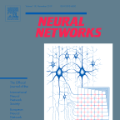Machine Learning (ML) has exhibited substantial success in the field of Natural Language Processing (NLP). For example large language models have empirically proven to be capable of producing text of high complexity and cohesion. However, they are prone to inaccuracies and hallucinations. As these systems are increasingly integrated into real-world applications, ensuring their safety and reliability becomes a primary concern. There are safety critical contexts where such models must be robust to variability or attack, and give guarantees over their output. Computer Vision had pioneered the use of formal verification of neural networks for such scenarios and developed common verification standards and pipelines, leveraging precise formal reasoning about geometric properties of data manifolds. In contrast, NLP verification methods have only recently appeared in the literature. While presenting sophisticated algorithms, these papers have not yet crystallised into a common methodology. They are often light on the pragmatical issues of NLP verification and the area remains fragmented. In this paper, we attempt to distil and evaluate general components of an NLP verification pipeline, that emerges from the progress in the field to date. Our contributions are two-fold. Firstly, we propose a general methodology to analyse the effect of the embedding gap, a problem that refers to the discrepancy between verification of geometric subspaces and the semantic meaning of sentences, which the geometric subspaces are supposed to represent. We propose a number of practical NLP methods that can help to quantify the effects of the embedding gap. Secondly, we give a general method for training and verification of neural networks that leverages a more precise geometric estimation of semantic similarity of sentences in the embedding space and helps to overcome the effects of the embedding gap in practice.
翻译:暂无翻译



